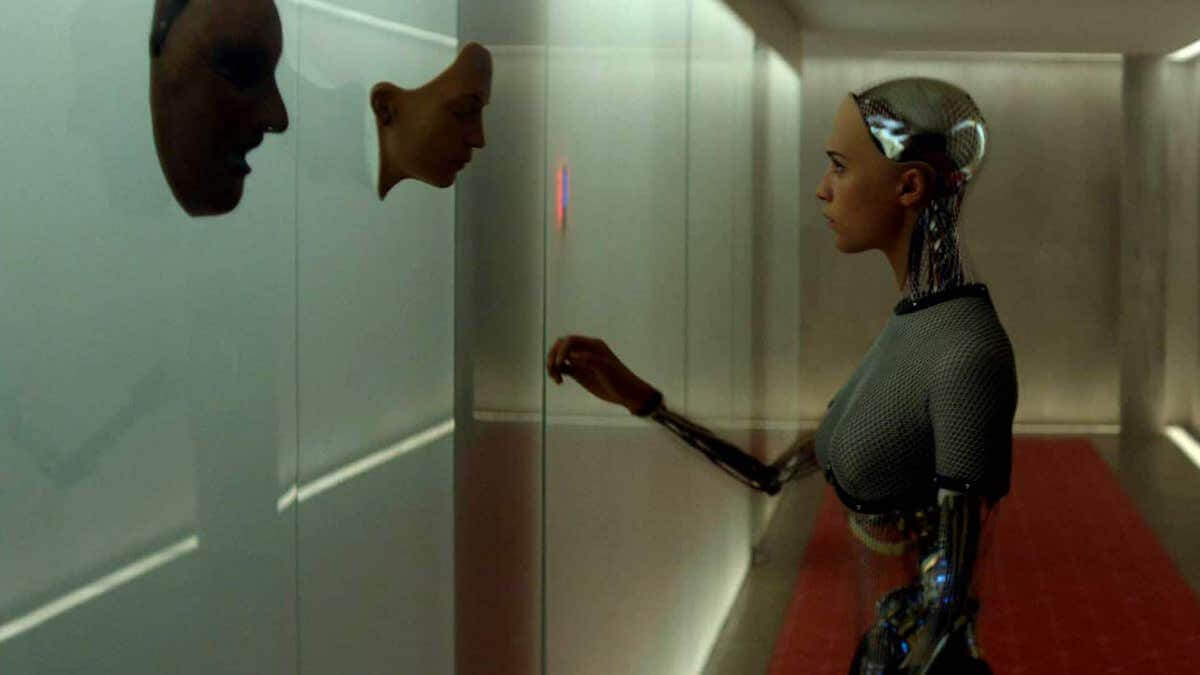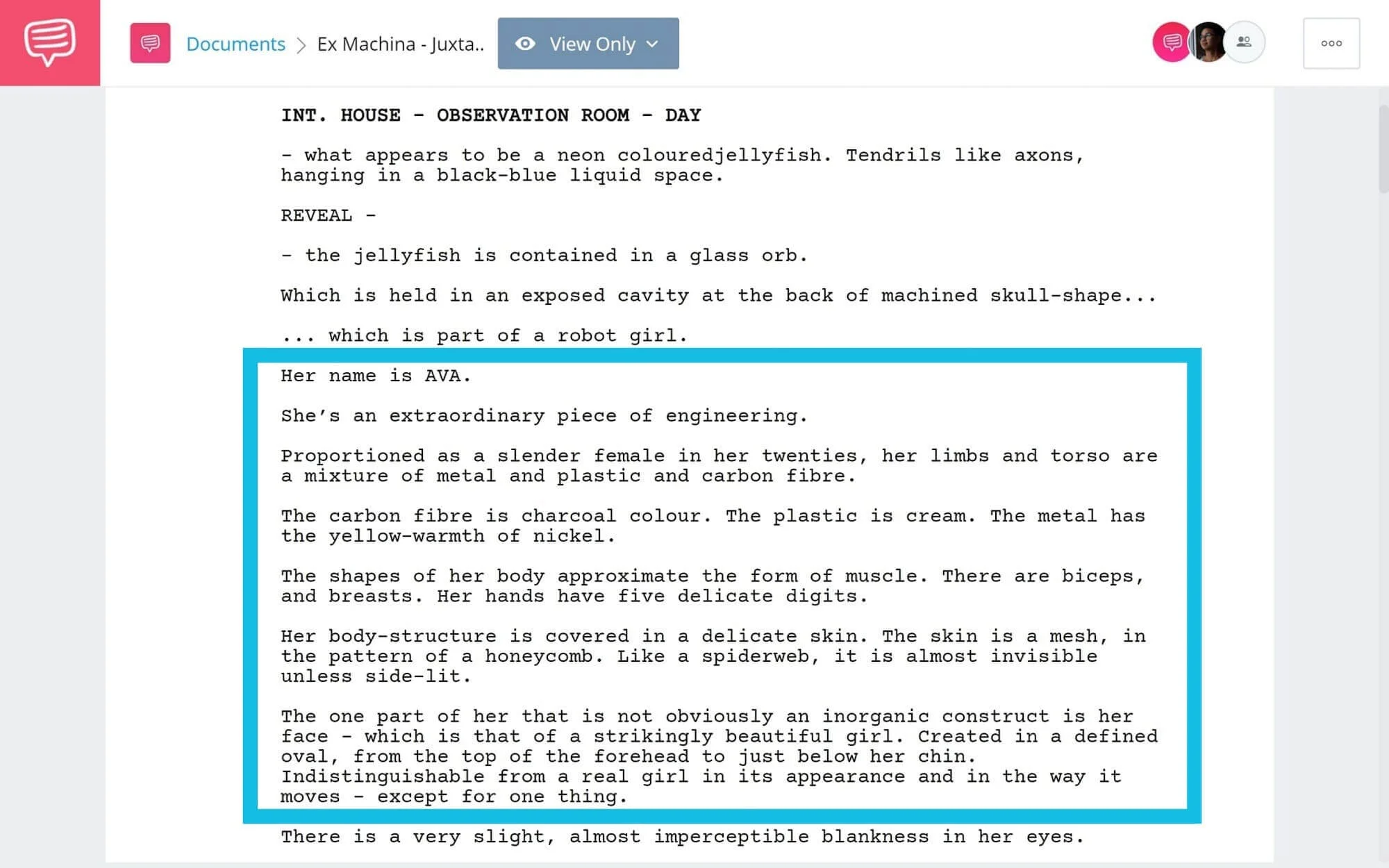Two is always better than one when it comes to Juxtaposition. Other than being the game-winning word in your next Scrabble match, what is juxtaposition? It is a frequently used term throughout the artistic world from photography to literature to film. Despite its frequent use, its meaning can be quite vague. We’ll define juxtaposition with examples in film so that you can use it throughout your next project.
Juxtaposition Definition
What does juxtaposition mean?
Artists throughout all mediums use juxtaposition. While different artists may use it in different ways depending on their form, it still serves the same function: to develop contrasts or comparisons between two or more things. Before we jump into some examples and uses, let's explore the juxtaposition definition.
JUXTAPOSITION DEFINITION
What is Juxtaposition?
Juxtaposition is the act of placing two or more things side-by-side to compare or contrast. It is used throughout art and literature to create meaning from two or more things. The prefix “juxta” derives from the Latin root meaning “nearby, near, close.” Proximity is a great juxtaposition synonym to understand the concept. The proximity of one thing to another creates meaning.
Juxtaposition Examples Used in Film:
- Words or descriptions in a screenplay
- Actors and props in a frame
- Shots edited together in post-production
Juxtaposition in Film
What is juxtaposition in film?
Now that we have a solid juxtaposition definition, let’s talk about what how it works in film. The filmmaking process is often a series of creative decisions. One of the most frequent decisions being made is how to arrange elements of a film. The elements that filmmakers juxtapose can vary from words on a page, actors, and props on the screen, to shots in the editing room. Let’s explore the different meanings of juxtaposition in film and how it can be used to tell a story.
Juxtaposing Words
Juxtaposition in screenwriting
Screenwriters often use juxtaposition when describing something or someone. Writers can juxtapose one description of a character or a place before the next to create a sense of perception. A great example of this can be found in Alex Garland’s Ex Machina.
To analyze the screenplay of Ex Machina, we brought the scene into StudioBinder’s screenwriting software. Here we broke down Garland’s introduction of Ava, an artificial intelligent being, and pinpoint some juxtaposition examples.
Garland begins by describing Ava as a “robot girl” created from “a mixture of metal and plastic and carbon fiber.” He proceeds to describe her having breasts, hands, and delicate skin shortly after.
Juxtaposition example in Ex Machina • Read Full Scene
By describing Ava first mechanically then anatomically, Garland is able to immediately bring up a core conflict of the film: Ava’s humanity. Take a look at how this is translated to the screen.
Ex Machina • Caleb First Meets Ava
Both Caleb’s and the audience’s first impression of Ava is an important point in Ex Machina. Garland is able to juxtapose his first mechanical description of Ava next to a human description of her to effectively highlight the underlying conflict of Ava’s humanity.
This scene is an example of the juxtaposition literary definition in which words are arranged. While everything in a film starts in the screenplay, juxtaposing can also be done in cinematography.
Juxtaposing Elements
Juxtaposition in cinematography
What does juxtaposition mean in cinematography? Oftentimes, directors of photography use it to illustrate conflict. Cinematographers juxtapose elements such as subject, foreground, and background to create meaning that is not found in the dialogue. This juxtaposition can explain character dynamics, plot points, or settings solely using composition. Take a look at this shot from the film Drive.
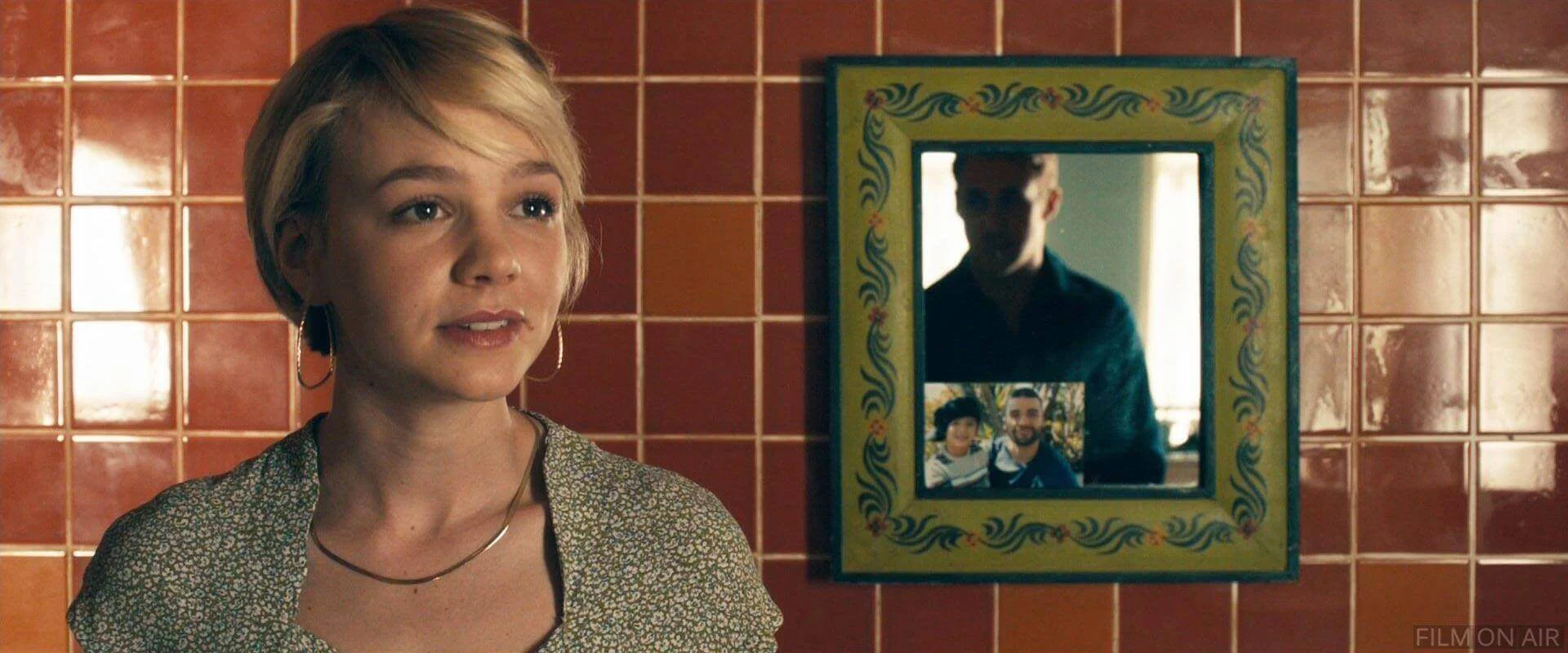
Juxtaposition in Drive
Without even watching the scene unfold, there is a ton of information in this shot. DP Newton Thomas Sigel uses the quadrant system to frame Irene as the subject to the left with a photo of her family on a mirror in the background, and in the mirror is Driver.
By juxtaposing all three elements, we can infer that Irene's family is what prevents her from having a deeper, intimate relationship with him.
If Sigel chose not to juxtapose Irene next to the mirror or the photo, the shot would have substantially less conflict. Here’s another juxtaposition example from Drive.
Juxtaposition in film • Drive
Again, Sigel uses juxtaposition to create suspense. By framing the unaware party-goers on the edges of the frame and Driver peeking through the door, Sigel creates a feeling of suspense and imminent doom. Also take note how proximity, a juxtaposition synonym, factors in here. Driver is shot right outside the door, the small distance is what creates meaning and suspense of what is to come.
Because Sigel uses the quadrant system in his cinematography, Drive contains a plethora of juxtaposition examples that utilize the entire frame. While cinematographers juxtapose within a shot, editors use the shots themselves to tell a story. Let’s understand how to define juxtaposition in post-production.
Juxtaposing Images
Juxtaposition in editing
One of the most fundamental principles of editing is the use of juxtaposition. The job of the editor, simply put, is to assemble and arrange the shots to create a story. Similar to the juxtaposition literary definition, editors arrange to create contrast and comparison with shots rather than words.
To define juxtaposition within post-production, it is important to understand the principle known as the Kuleshov Effect. The Kuleshov Effect is a theory that suggests viewers derive more meaning from the juxtaposition of two sequential shots than from isolated single shots.
The figure below illustrates how the combination of images can produced meanings that wouldn't exist otherwise. The same image of an expressionless man takes different meanings when paired with different secondary images.
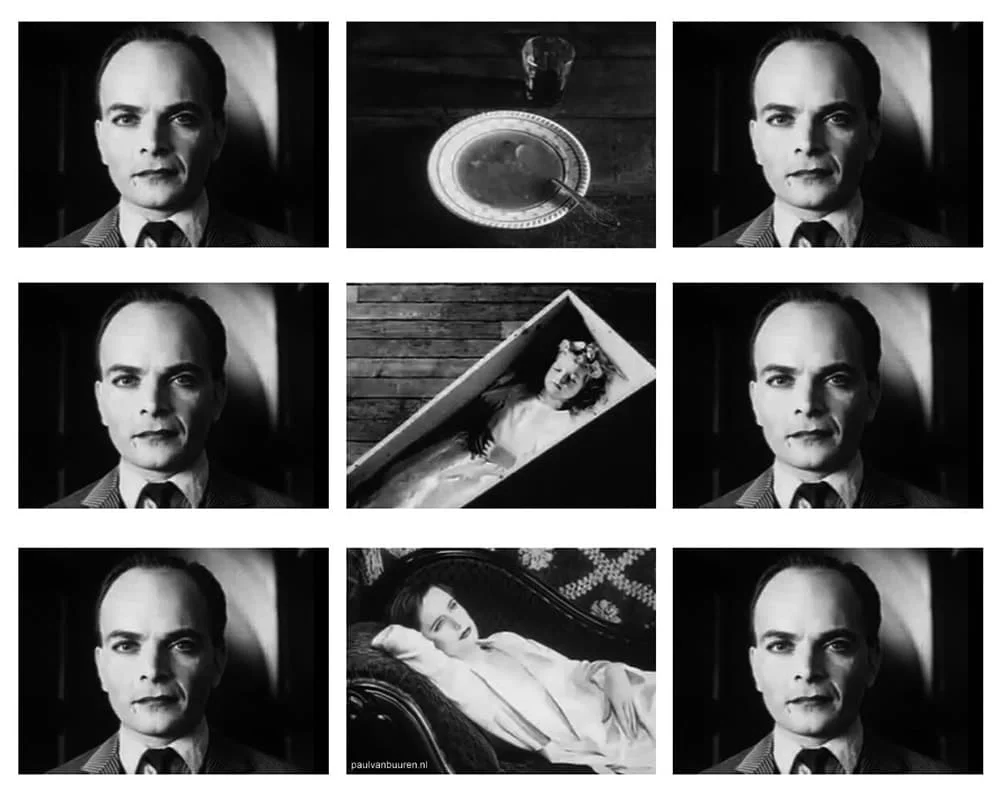
Juxtaposition in Editing
This Kuleshov Effect became the basis of nearly all film editing. Alfred Hitchcock even considered this one of his three theories of film editing. Let's let the Master of Suspense himself explain the concept.
Alfred Hitchcock • Juxtaposition meaning in editing
To juxtapose a shot before or after another is to create meaning that the shots would not have without each other. This same theory applies to complementary sequences when combined. Hitchcock isn't the first or only filmmaker to understand this process.
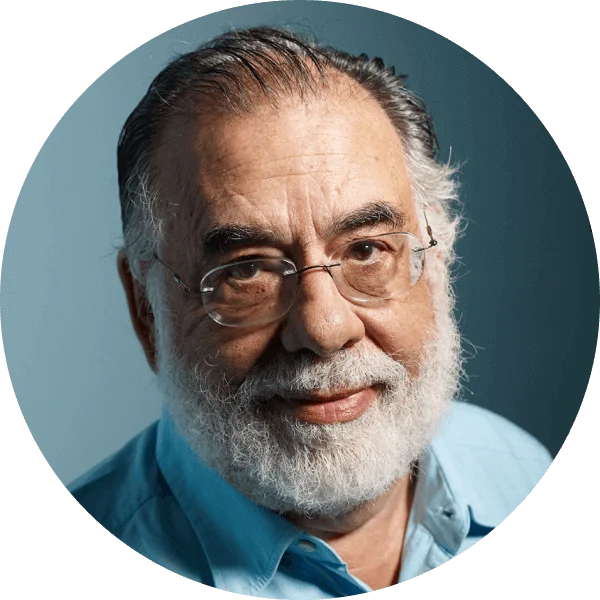
"The essence of cinema is editing. It’s the combination of what can be extraordinary images of people during emotional moments, or images in a general sense, put together in a kind of alchemy.”
- FRANCIS FORD COPPOLA
Take a look at this iconic juxtaposition example from The Godfather. It's clear that Coppola understands how to use this "alchemy" of juxtaposition in film. When watching this sequence, ask yourself what connections are being suggested between the two scenarios?
The Baptism Scene from The Godfather
This montage, edited by Peter Zinner and William Reynolds, uses juxtaposition masterfully. Imagine if these two scenes were shown separately rather than being inter-cut. The baptism might appear as a rather meaningless plot point while the assassination scene would appear to be less methodical and strategic.
Zinner and Reynolds chose to juxtapose the two scenes together to create something new. From this, the audience is able to understand that the execution of Michael’s assassinations was a rebirth and christening for him as Don Corleone.
UP NEXT
The Kuleshov Effect explained
Now that we have been able to define juxtaposition and analyze examples of it used in film, let’s dig deeper into the Kuleshov Effect and why it is the basis for all of film editing. We’ll dive deeper into Hitchcock and his juxtaposition examples in editing. We’ll also look into how Spielberg often subverts the Kuleshov Effect to put his own twist on it.
Up Next: The Kuleshov Effect →
Showcase your vision with elegant shot lists and storyboards.
Create robust and customizable shot lists. Upload images to make storyboards and slideshows.
